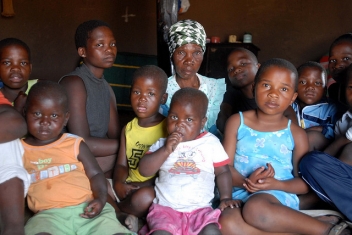 On 23 November, UNAIDS launched its latest Global Report on the AIDS Epidemic. Its findings were based on reports submitted by member states to the UN earlier this year.
On 23 November, UNAIDS launched its latest Global Report on the AIDS Epidemic. Its findings were based on reports submitted by member states to the UN earlier this year.
The report has many positive messages: Since 1999, the number of new infections has fallen by 19% globally. Fewer people are dying as a result of AIDS. Significant progress has also been made with regard access to Anti Retroviral Therapy (ART) with 5.2 million people now accessing the drugs they need.
Older people remain invisible
While these findings point towards significant progress in the response to HIV and must be applauded, one group remains completely invisible in the Global Report: older people.
Reading the report I am disappointed but sadly not surprised to find no reference to the impact of HIV and AIDS on those aged 50 and over and no data for this age group. The report only makes one specific mention of older people. UNAIDS ‘recognises the burden of infection and disease beyond the age of 49′ but continues to present prevalence data for the 15-49 year age group only.
UNAIDS made the same comment four years ago in the 2006 Global Report and yet still presents no data for older people and makes no mention of them throughout the report.
How long will it take for this recognition to turn in to some concrete action to address the needs of older people affected by the epidemic?
Challenges can be overcome
At HelpAge we know only too well the challenges of epidemic monitoring for those aged 50 and over. However, we also know that these challenges can be overcome. The complete invisibility of older people in the Global Report is not mirrored in the country progress reports, many of which do include older people.
Many countries now present prevalence data for people aged 50 and over, including Botswana, Kenya, Rwanda, South Africa, St Kitts and Nevis, Swaziland and Uganda. Other reports make reference to the impact of HIV on older people and specifically raise the challenge of data only being presented for those aged 15-49, most notably the reports submitted by Mozambique and Zambia, both of which have whole sections dedicated to older people.
Data is also available on the number of HIV and AIDS cases among older people in many countries across the world, from China to Yemen to Trinidad and Tobago. When will this data be properly used at global level to demonstrate the impact of the epidemic on older people and the need to include them in the response?
The crucial role of grandparents
Many of the country reports also highlight the role older people are playing in caring for orphaned and vulnerable children and others living with HIV. Yet this crucial contribution is again not captured in the Global Report.
There is a section in the report on the number of orphaned and vulnerable children throughout Africa but very little mention is given to the situation in which these children live.
The report makes reference to ‘the systems and networks, both formal and informal that have been established to support children orphaned by the epidemic’, without mentioning what these systems and networks are.
We know that between 40 and 60% of orphaned children in East and Southern Africa are looked after by their grandparents. In some countries this figure is much higher, for example, in Zimbabwe where 81% of double orphans are cared for by older people. Surely this warrants some recognition in the Global Report and some analysis of the support needs of these grandparents to fulfil this care role?
Looking ahead
Looking ahead we have a crucial opportunity. In 2011, there will be a high level UNGASS meeting on HIV and AIDS in New York where progress in the HIV response will be reviewed and new global targets are likely to be set. It is crucial that older people are included.
The current review of the indicators used to monitor progress in the global HIV response also provides an opportunity. The focus of these indicators on the 15-49 year age group is a major factor in the neglect of older people in the Global Report. These indicators and the surveys used at national level to collect data must be amended to include those aged 50 and over.
If these opportunities are capitalised upon, perhaps the next Global Report will be more representative of the global epidemic…in its entirety!
Read more on HelpAge’s work on HIV and AIDS and older people
